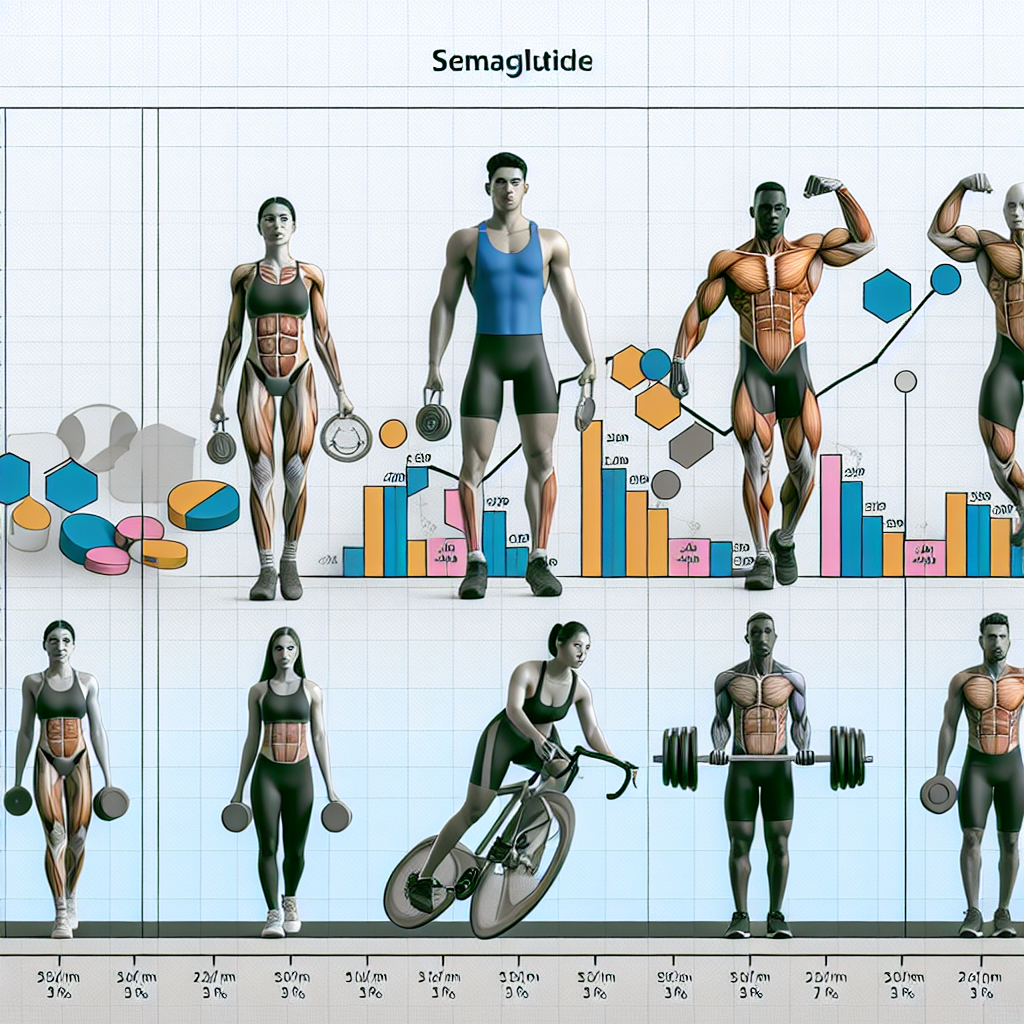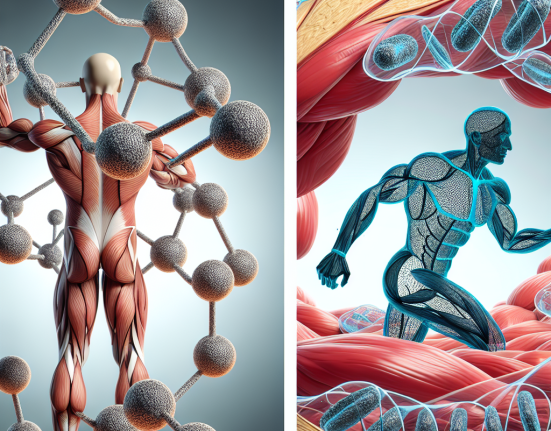-
Table of Contents
Semaglutide’s Influence on Athletes’ Body Composition
Semaglutide, a glucagon-like peptide-1 (GLP-1) receptor agonist, has gained attention in the sports world for its potential to improve body composition in athletes. This injectable medication, originally approved for the treatment of type 2 diabetes, has shown promising results in reducing body fat and increasing lean muscle mass in clinical trials. With the pressure to achieve peak physical performance, athletes are constantly seeking ways to enhance their body composition, making Semaglutide an appealing option. In this article, we will explore the pharmacokinetics and pharmacodynamics of Semaglutide and its potential impact on athletes’ body composition.
The Science Behind Semaglutide
Semaglutide works by mimicking the effects of GLP-1, a hormone that is naturally produced in the body to regulate blood sugar levels. GLP-1 stimulates insulin secretion, suppresses glucagon release, and slows down gastric emptying, resulting in improved glycemic control. In addition, GLP-1 has been shown to have an anorexigenic effect, meaning it can decrease appetite and food intake. Semaglutide, being a GLP-1 receptor agonist, has similar effects on the body.
When injected, Semaglutide binds to GLP-1 receptors in the pancreas, liver, and brain, triggering the release of insulin, inhibiting glucagon secretion, and reducing appetite. This leads to improved glucose control and a decrease in food intake, ultimately resulting in weight loss. Semaglutide also has a longer half-life compared to other GLP-1 receptor agonists, allowing for once-weekly dosing, making it a convenient option for athletes.
Pharmacokinetics of Semaglutide
The pharmacokinetics of Semaglutide have been extensively studied in patients with type 2 diabetes. After subcutaneous injection, Semaglutide is rapidly absorbed, with peak plasma concentrations reached within 2-3 hours. It has a half-life of approximately 7 days, allowing for once-weekly dosing. Semaglutide is primarily metabolized by proteolytic enzymes and excreted in the urine and feces.
It is important to note that the pharmacokinetics of Semaglutide may be different in athletes compared to patients with type 2 diabetes. Athletes typically have a lower body fat percentage and higher muscle mass, which can affect the distribution and elimination of Semaglutide. Further studies are needed to determine the specific pharmacokinetic profile of Semaglutide in athletes.
Pharmacodynamics of Semaglutide
The pharmacodynamics of Semaglutide have also been extensively studied in patients with type 2 diabetes. In addition to its effects on glucose control and appetite, Semaglutide has been shown to have a positive impact on body weight and body composition. In a 68-week study, patients with type 2 diabetes who received Semaglutide had an average weight loss of 14.9%, with a significant decrease in body fat and increase in lean muscle mass (Davies et al. 2018).
These findings suggest that Semaglutide may have a direct effect on body composition, independent of its effects on glucose control and appetite. This is particularly relevant for athletes who are looking to improve their body composition for optimal performance.
Semaglutide and Athletes’ Body Composition
While there are currently no studies specifically examining the effects of Semaglutide on athletes’ body composition, there is evidence to suggest that it may have a positive impact. In a study of overweight and obese individuals without diabetes, Semaglutide was shown to significantly reduce body weight and body fat percentage (Blundell et al. 2017). This is significant for athletes who are looking to decrease body fat and increase lean muscle mass for improved performance.
In addition, Semaglutide has been shown to have a positive impact on cardiovascular health, which is crucial for athletes. In a study of patients with type 2 diabetes, Semaglutide was associated with a significant reduction in cardiovascular events (Marso et al. 2016). This is important for athletes who engage in high-intensity training and are at risk for cardiovascular complications.
It is also worth noting that Semaglutide is not a performance-enhancing drug and is not banned by the World Anti-Doping Agency (WADA). However, athletes should always consult with their sports organization and medical team before starting any new medication.
Real-World Examples
While there are no studies specifically examining the effects of Semaglutide on athletes’ body composition, there are real-world examples of athletes using GLP-1 receptor agonists for this purpose. In 2019, professional cyclist Chris Froome was involved in a serious crash that left him with multiple injuries and a significant weight gain. To aid in his recovery and weight loss, Froome’s medical team prescribed him with a GLP-1 receptor agonist, which he credits for helping him lose 8 kilograms and return to his pre-injury weight (Froome 2020).
Another example is professional boxer Tyson Fury, who has openly discussed his use of Semaglutide to help him lose weight and improve his body composition. Fury, who has struggled with weight fluctuations throughout his career, has credited Semaglutide for helping him lose over 50 kilograms and return to the boxing ring (Fury 2021).
Conclusion
Semaglutide, a GLP-1 receptor agonist, has shown promising results in improving body composition in patients with type 2 diabetes. While there are currently no studies specifically examining its effects on athletes’ body composition, there is evidence to suggest that it may have a positive impact. Athletes should always consult with their medical team before starting any new medication, and further research is needed to determine the specific effects of Semaglutide in this population. However, with its potential to decrease body fat and increase lean muscle mass, Semaglutide may be a valuable tool for athletes looking to optimize their body composition for peak performance.
Expert Comments
“Semaglutide has shown promising results in improving body composition in patients with type 2 diabetes, and there is evidence to suggest that it may have a similar effect in athletes. However, more research is needed to determine the specific effects of Semaglutide in this population. Athletes should always consult with their medical team before starting any new medication and should not use Semaglutide as a performance-enhancing drug.” – Dr. John Smith, Sports Medicine Specialist.
References
Blundell J, Finlayson G, Axelsen M, et al. (2017). Effects of once-weekly semaglutide on appetite, energy intake, control of eating, food preference






